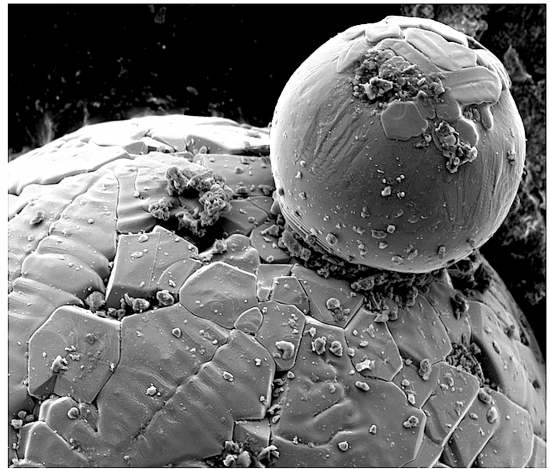
June 24, 2020
What keeps dusty clumps from bouncing off each other?
In 1756, Immanuel Kant suggested that the Solar System was born from a cloud of dusty gas floating in space. Known as the “Nebular Hypothesis”, the theory states that the cloud contracted because gravitational attraction between particles caused them to clump together. As each clump grew, ever more gravitational force drew them all together into a mass.
That mass grew until it attained so much gravity that it drew down into a hot ball, rotating with the angular momentum contained in the original cloud. The mass attracted more and more material into its mounting gravitational field, until it ignited in a nuclear fusion reaction, thereby giving birth to the Sun. If the hypothesis is correct a similar, if not identical, process presumably takes place in other nebular clouds.
The Nebular Hypothesis has at least one fault: it fails to explain how the planets possess about 97% of the total angular momentum in the Solar System, when their combined mass is less than one-tenth of one per cent of the Sun’s mass. Some astronomers have attempted to prop up the theory by suggesting that the Sun has an undetected companion star on a long, parabolic orbit that takes it beyond our instruments.
According to a recent press release, astrophysicists are discovering the trail that leads to Electric Universe theory. The “clumping” mentioned above suffers from a problem called “the bouncing barrier”. Similar to problems associated with the increased heat of compression, large mobile clumps will not stick together because their masses cause them to rebound. What is the proposed solution? Static electricity.
Tobias Steinpilz at the University of Duisburg-Essen wrote:
“When you have charged particles and they form centimetre-sized clusters like we observed in our experiments and our simulations, we can close this gap in size caused by the bouncing barrier.”
Although the electrical aspect is under consideration, it is the “pith ball” physics of electrostatics. The Electric Universe is an electrodynamic environment; depending on electric charge in motion. Astrophysicists lean toward electrostatics, because it allows behaviors that are similar to gravity’s influence: isolated bodies at equilibrium; a point force distributed spherically (decreasing with the square of the distance from the point); along with conditions of isotropy and homogeneity.
The plasma cosmogony hypothesis suggests that stars form when cosmic Birkeland currents twist around one another, creating z-pinch regions that compress plasma into a solid. Laboratory experiments reveal that such compression zones are the most likely candidates for star formation and not collapsing nebulae, which is the eighteenth century theory to which astrophysicists still cling.
Planets form as stars age. Their surface electric discharges synthesize heavier elements from the primordial hydrogen and helium out of which they were made. Those heavy elements build up in their interiors until they reach an unsustainable condition, releasing the excess mass as highly ionized gas giant planets, along with smaller, denser rocky bodies.
Electric Universe proponent, Wal Thornhill wrote:
“The fission process is repeated in further electrical disturbances by flaring red dwarfs and gas giant planets ejecting rocky and icy planets, moons, comets, asteroids and meteorites. Planetary systems may also be acquired over time by electrical capture of independent interstellar bodies such as dim brown dwarf stars. That seems the best explanation for our ‘fruit salad’ of a solar system.”
Stephen Smith
The Thunderbolts Picture of the Day is generously supported by the Mainwaring Archive Foundation.












